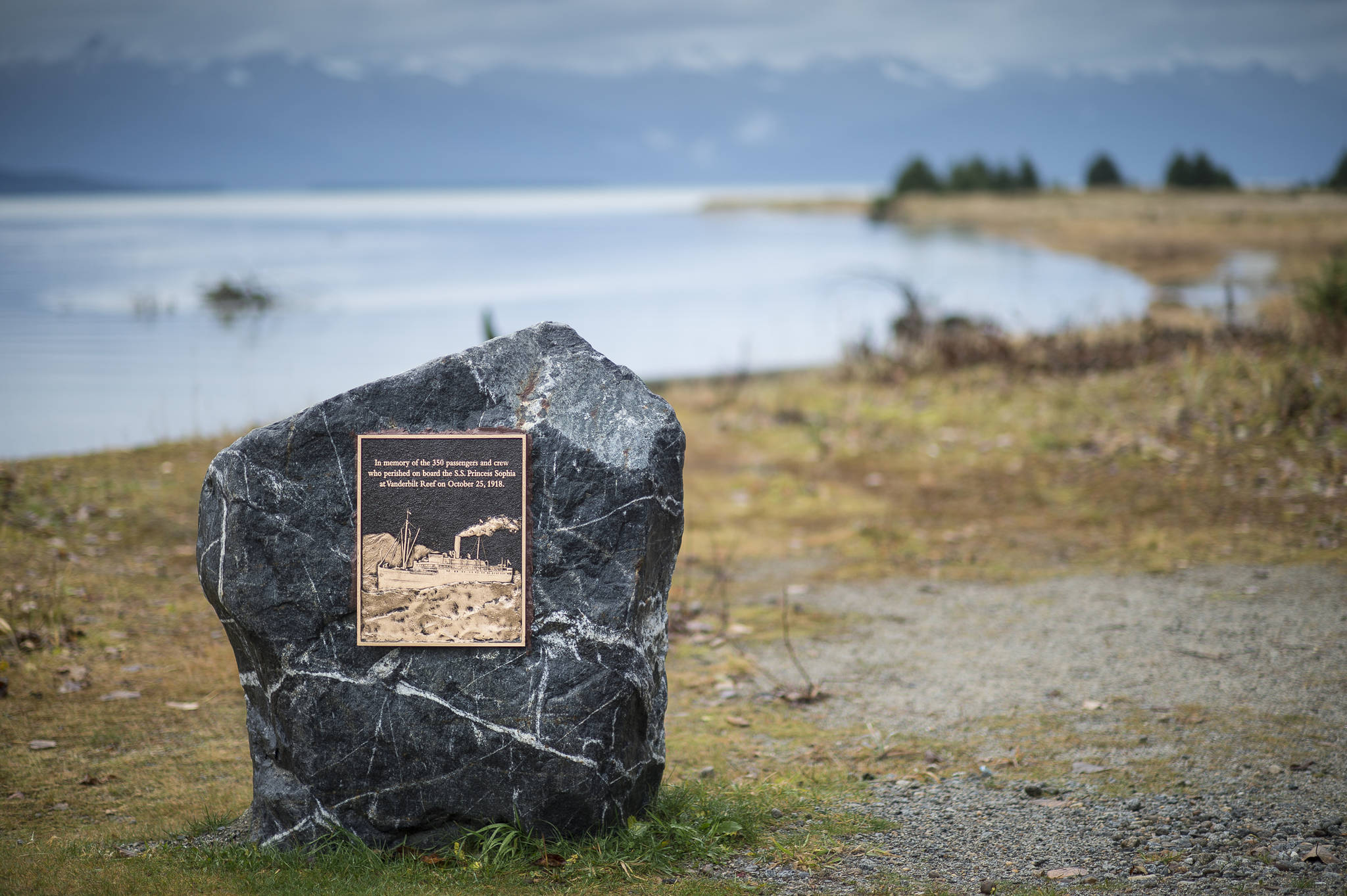Weather on Thursday’s centennial and the day of the Princess Sophia’s sinking shared a bit in common — but not to an eerie degree, said National Weather Service general forecaster Edward Liske.
“The weather is trying its darnedest to recreate it, but it’s blowing in the opposite direction,” Liske said.
Southerly storm winds blew near the wreck site in Lynn Canal on Thursday morning. The seas were choppy, and the rain fell hard in Juneau on the centennial, but no snow fell as it had on Oct. 25, 1918.
Data about the weather on the day of the sinking comes from a scant few sources. Records exist from two lighthouse keepers at Sentinel Island and Eldred Rock and ship reports from responding vessels.
Gale force winds blew over the ship’s decks and blinding snow beat down, according to those sources. Winds were about 40-51 mph out of the north the day of the sinking.
Theoretically, that could have resulted in 10-foot seas at the low end and 14-foot seas at the high end, Liske said. The direction of wind on the day of the sinking was a little more perilous to sailors than it was Thursday morning. Northerly winds at that point in Lynn Canal have a longer distance to build up, Liske said, than southerly winds near Vanderbilt Reef.
If the NWS had been around to warn mariners at the time of the sinking, Liske said they would have been “well past” dangerous sailing conditions.
Winds from a storm system that hit Juneau Wednesday peaked early Thursday morning. High winds of 40 mph with gusts up to 51 mph were measured at Little Island, the nearest weather station to Vanderbilt reef, at about 5 a.m.
Conditions lightened up in Lynn Canal later in the afternoon. By mid-afternoon Thursday, a few hours before the last messages were sent by the Sophia a century ago, waters were calm in Lynn Canal at the Sophia Memorial at Eagle Beach.
• Contact reporter Kevin Gullufsen at 523-2228 and kgullufsen@juneauempire.com. Follow him on Twitter at @KevinGullufsen.

